 |
Welcome to Amethyst-Creek.com! |  |
| Thought for today, May 19, 2025: A treasure is not always a friend, but a friend is always a treasure. |
| Home | Gold and Glitter | Return of the Scoundrel | The Gold Miner's Wife | Love's Dance | The Next Generation, A Sequel to Pride and Prejudice |
|
Books by Amethyst Creek |
||||
|
Gold and Glitter |
Return of the Scoundrel |
The Gold Miner's Wife |
Love's Dance |
The Next Generation, A Sequel to Pride and Prejudice |
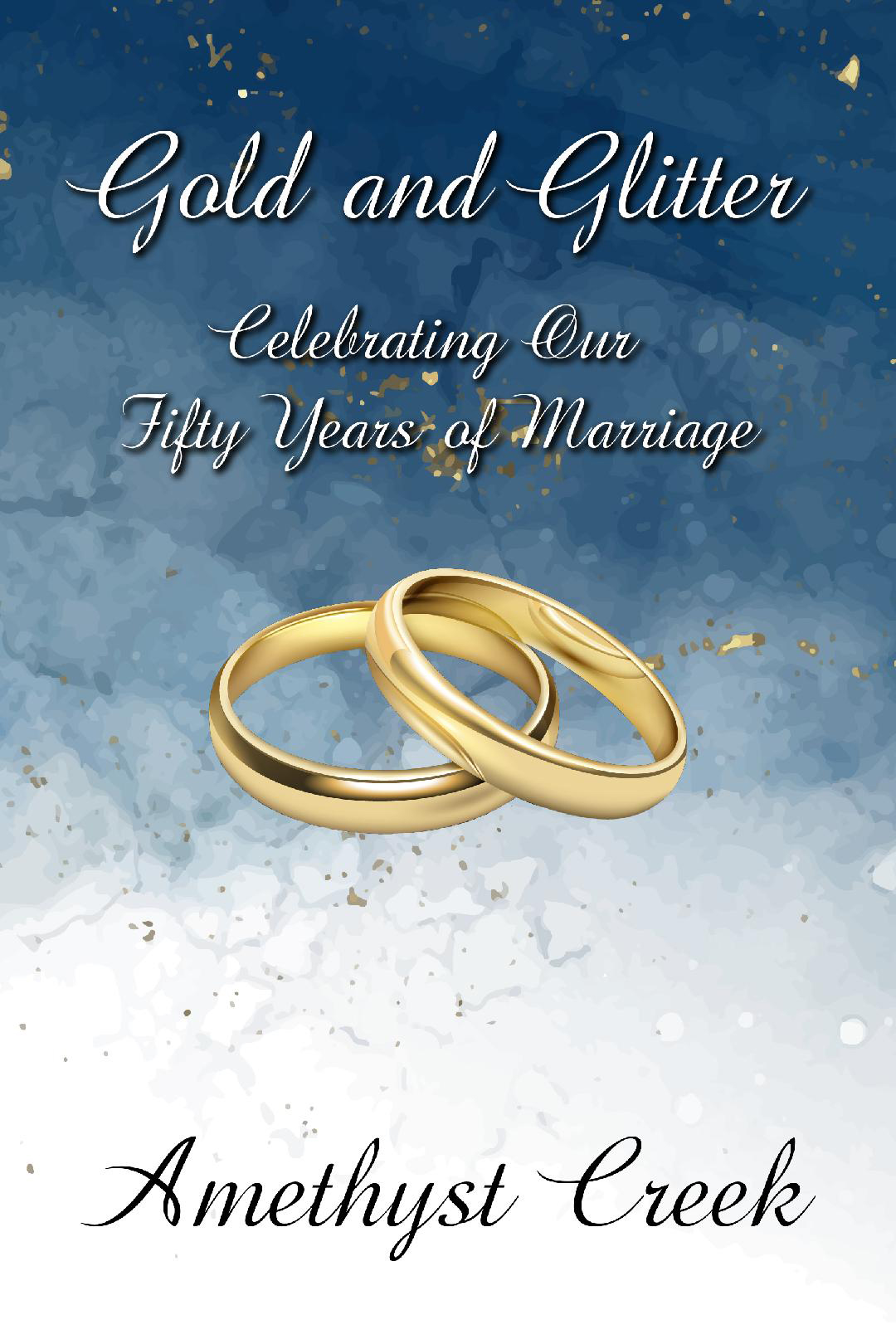
|
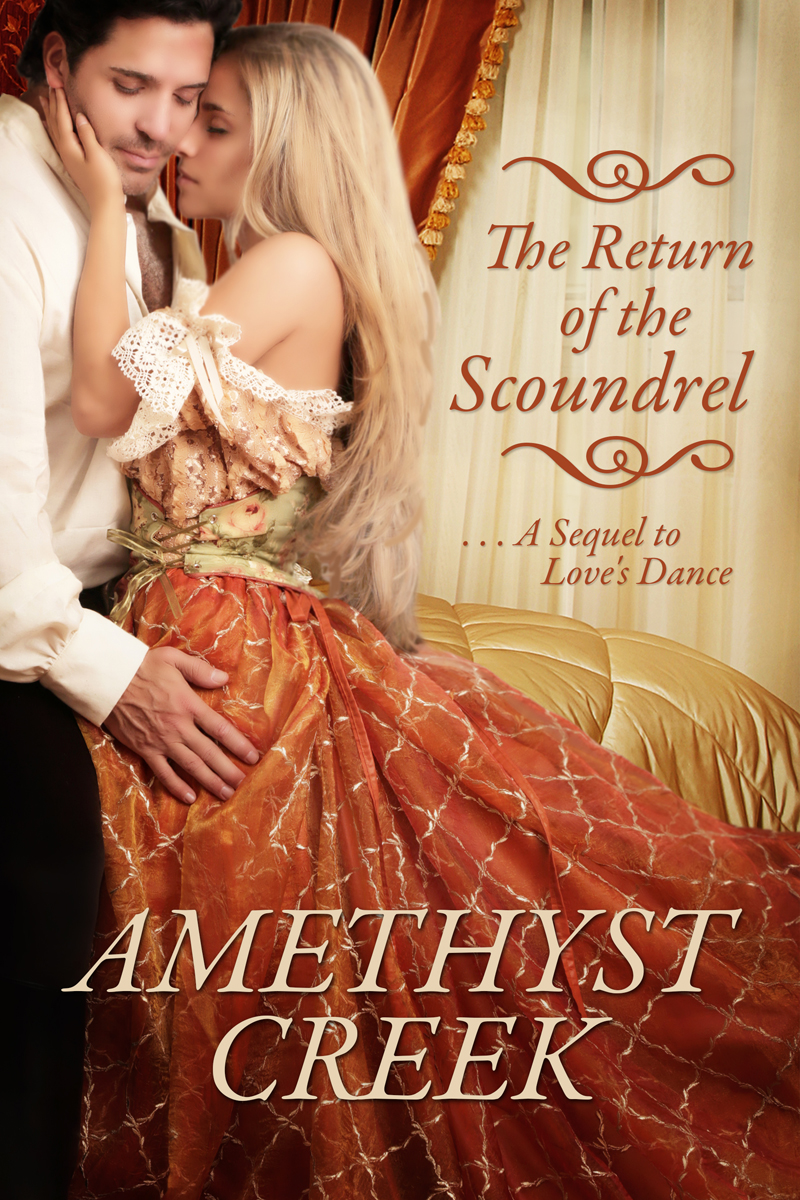
|
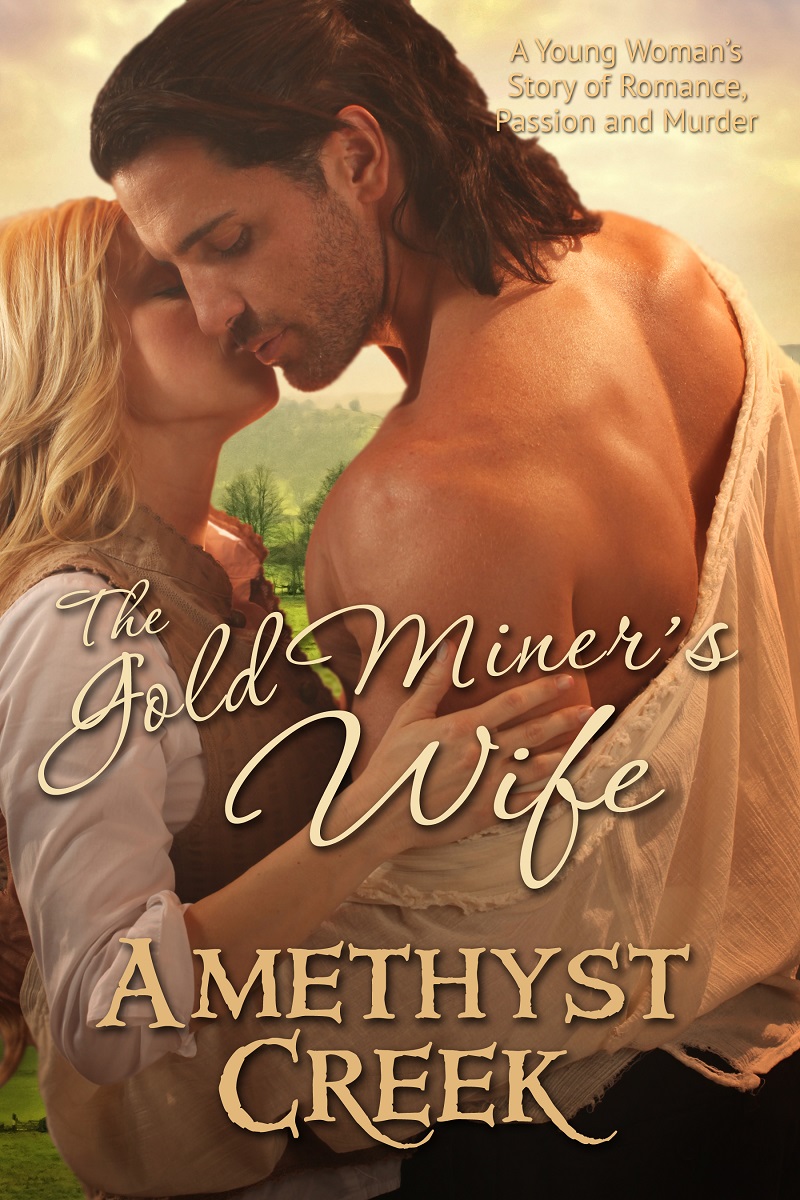
|

|

|
|
Marriage is an adventure. It is often a beautiful, lasting journey filled with excitement, humor and romance, along with some mayhem, friction and unexpected events. In this narrative, I will share with you a series of incidents and colorful individuals that made a lasting impression through fifty years of marriage. |
It is 1888 and handsome scoundrel Bridger Crandall has escaped from prison. He is eager to plot revenge against the woman who put him there seven years ago, Maggie Blackstone. |
In 1873 a young artist leaves her home in England to spend a few months painting the lovely landscapes of the Colorado Rockies. A chance meeting leads her to romance and passion. When tragedy unexpectedly strikes, she must discover who has betrayed her. |
In 1879 a bold and determined young woman sets off to find love and loses her heart in the West. She never expected to find herself flirting with danger. |
The principal characters in Jane Austen’s Pride and Prejudice are married or betrothed by the end of her story. In this continuation, we take a look at how the adult children of these marriages have proceeded in life. |
|
Amethyst Creek  |
||
|
Amethyst Creek met her husband at the University of Denver. They have been married since 1972 and have two grown sons, two wonderful daughters-in-law and one adorable granddaughter all living in the Denver area. She has been a member of the Whooping Crane Conservation Association for many years and believes it is important to share with others the continued struggles of this amazing bird. She is also a proud member of the Daughters of the American Revolution and has been active in her local chapter and the Colorado State Society. Amethyst has also been a member of the PEO sisterhood for nearly twenty years. She is retired from teaching, loves to garden, is an avid reader and has travelled extensively. Her orange tabby cat is named Mr. Darcy! One of the most memorable experiences of her teaching career came as a result of the ‘Adopt a Ship’ program sponsored by the Propeller Club of the United States. For fifteen years fifth grade students from her school corresponded with the master and crew of the GT Chevron Colorado, an oil tanker based out of Chevron’s Richmond Refinery in San Francisco. This vessel travelled all over the world and through regular correspondence and school visits from members of the crew, the kids learned many things about life at sea, the responsibilities aboard ship and skills needed for a career in the maritime industry. The girls were interested as much as the boys – one of the female officers aboard the Colorado became the Mooring Master at the Richmond Refinery. It was a great pleasure to be invited by the ship’s Master, Carl Gruelund, to take a short journey aboard the Colorado in the summer of 2000. The ship had offloaded 265,000 barrels of jet fuel in Portland, her hull then refilled with water for ballast. To satisfy U.S. Coastguard requirements, Amethyst was designated as a supernumerary, or extra hand, for the voyage to San Francisco. Highlights from this unforgettable adventure were reported in the Chevron Now magazine (March-May 2001 issue). Below is an artist’s rendering of the GT Chevron Colorado. After twenty-five years at sea, she was decommissioned in June, 2010. 
|
||
|
Amethyst Creek @ Amazon
Amethyst Creek @ Facebook
Amethyst Creek @ goodreads
|
| Amethyst Creek: Home |
  
|
| Books by Amethyst Creek |
| Amethyst Creek |
  
|
| Amethyst Creek Profile at amazon.com. |
   |
The Gold Miner’s Wife
Author’s Notes |
   |
|
Chapters One and Twenty-three A recipe for Catori’s “Indian Fry Bread” |
||
|
Ingredients: 4 cups flour 1 tablespoon baking powder 1 teaspoon salt 2 tablespoons powdered milk 1 ½ cups warm water 1 cup shortening Extra flour to flour your hands |
||
|
Directions: Mix dry ingredients in a bowl. Add warm water to form dough. Cover hands in flour. Knead dough by hand until soft but not sticky. Cover with a cloth and let stand for 15 minutes. Shape dough into balls about two inches across, then flatten by patting and stretching the dough. Melt shortening about an inch deep in frying pan. When hot, put dough in pan. Fry on one side until golden brown, then turn and fry on other side. This is a wonderful bread that can be used as a dessert by topping with honey, powdered sugar, cinnamon, etc. It can also be used for main dishes such as topping with taco ingredients for an ‘Indian Taco’. |
||
|
Chapter Seven |
||
|
On May 10, 1876, President Ulysses S. Grant opened the Centennial Exhibition in Philadelphia. There were 186,000 people in attendance that day. The fairgrounds contained some two hundred buildings. In addition to Hires Root Beer, linoleum and Bell’s telephone, other products displayed for the first time included Heinz Ketchup, popcorn, bananas and the Remington Typographic Machine (the typewriter). Among the notables assembled to hear Grant’s opening remarks were William Tecumseh Sherman and Philip Sheridan. When the exhibition ended on November 10, nearly ten million visitors had attended. Some 37 countries also participated.
Some notes about General Custer and the Battle of Little Bighorn referenced in Chapter Seven: General George Armstrong Custer’s defeat at the Battle of Little Bighorn was much in the news. Sitting Bull was encamped along the Little Missouri River with fifteen hundred lodges and three thousand warriors. They outnumbered the 7th Cavalry’s officers and enlisted men by four to one. Custer had bragged to a group of New York City businessmen in the spring of 1876 that the 7th Cavalry ‘could whip and defeat all the Indians on the plains.’ Five of the 7th Cavalry’s twelve companies were annihilated. Two of Custer’s brothers, a nephew and a brother-in-law were also killed that day. Custer had an air of gallantry and panache. He was also strong-headed and was an officer known for going his own way. Custer certainly had his quirks. For one thing, he seemed to be always washing his hands. He brushed his teeth after every meal and even carried his toothbrush with him into battle. He was also a teetotaler. At Fort Lincoln, Custer’s favorite room in his two-story house was his study. To remain undisturbed he would place a sign on the door that read: ‘This is my busy day.’ Custer was known for his bravery in battle, and established his reputation as a fine soldier at the Battle of Gettysburg. At the end of the Civil War, General Philip Sheridan awarded to Libbie Custer the table on which Grant and Lee signed the surrender at Appomattox. Included with the gift was a note: “…permit me to say, Madam, that there is scarcely an individual in our service who has contributed more to bring this desirable result than your gallant husband.” The 7th Cavalry included a significant number of raw recruits. Since the pay was miserable, the army tended to attract those who had no other employment options, including recent immigrants. Twenty-four-year-old Charles Windolph from Bergen, Germany was among them. Ironically, he had come to the United States to escape fighting his country’s war with France. Twelve percent of the 7th Cavalry had been born in Germany, 17 percent in Ireland, and 4 percent in England. The regiment also included troopers from Canada, Denmark, Switzerland, France, Italy, Sweden, Norway, Spain, Greece, Poland, Hungary and Russia. Private Charles Windolph (not under the command of Custer, but rather a member of Captain Frederick Benteen’s H Company), was the last Little Bighorn veteran of the 7th Cavalry to die (in 1950). |
||
|
Amethyst Creek @ Amazon
Amethyst Creek @ Facebook
Amethyst Creek @ goodreads
|
| Amethyst Creek: The Gold Miner's Wife |
  
|
| A recipe for Catori’s “Indian Fry Bread” |
| Chapter Seven |
  
|
| Praise for The Gold Miner's Wife on freshfiction.com. |
|
Purchase The Gold Miner's Wife on amazon.com. |
  
|
   |
Love’s Dance Author’s Notes |
   |
|
Chapter One |
||
|
The book of advice by George Hudson that is referenced in this chapter was actually published in 1883 and is a very interesting read. My, how the times have changed! “The Marriage Guide for Young Men; A Manual of Courtship and Marriage” was digitized by Google from the library of Harvard University and may be read on-line in its entirety. I especially liked the author’s comments on page 20 about mothers-in-law.
|
||
|
Chapter Six |
||
|
When Evelyn described to Maggie how the Native American’s used ‘every part’ of the buffalo she wasn’t kidding. The illustration below summarizes the many useful items that were made from one carcass. For the Sioux Indians in particular, the buffalo was essential to their existence. Their food, their lodges, their clothing, their weapons, even their fuel source (dried buffalo dung) came from the North American bison. Fifteen to seventeen female buffalo skins were needed to make a teepee. The flesh and fur were stripped away with elk-bone scrapers and the hide made pliable with the buffalo’s mashed brains. My research found that Sitting Bull’s people ate, on average, six buffalo per person, per year (The Last Stand by Nathaniel Philbrick, p. 110). It was a catastrophe when their food source, the buffalo, disappeared. After a lifetime of meals consisting of buffalo meat, some Indians reported that it was initially very difficult to digest bread.
|
||

|
|
Chapters Seven and Twenty |
||
|
The merchant ship Protesilaus referenced in these two chapters was a real vessel of the early 1900’s. I first learned of this ship and her voyages from a friend whose grandfather, John S. Newcomb, served as the doctor aboard the vessel. I liked the unusual name of the ship and decided to use it. In the pages that follow, you will find a lengthy letter from Dr. Newcomb to his family during one of those voyages. Moored in Vladivostok, Siberia in June of 1919, Dr. Newcomb comments ‘The Bolchiviciki are much in evidence – you can tell them by their bushy whiskers and their generally lousy look.” The letter is an interesting read and offers a glimpse of someone’s first-hand observations during those troubled times.
|
||
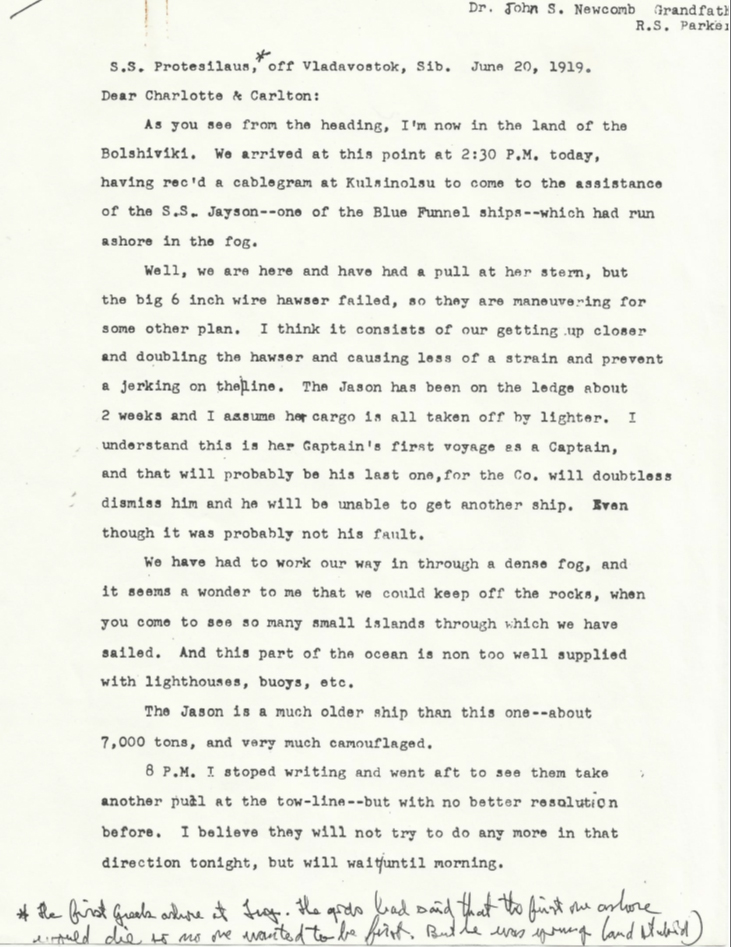
|

|
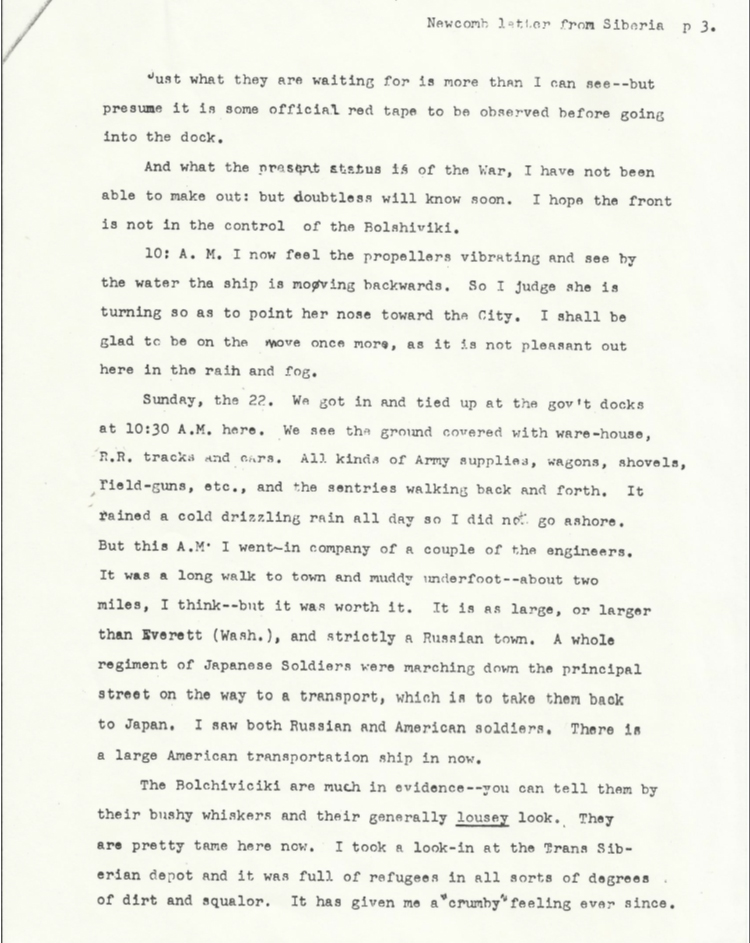
|

|
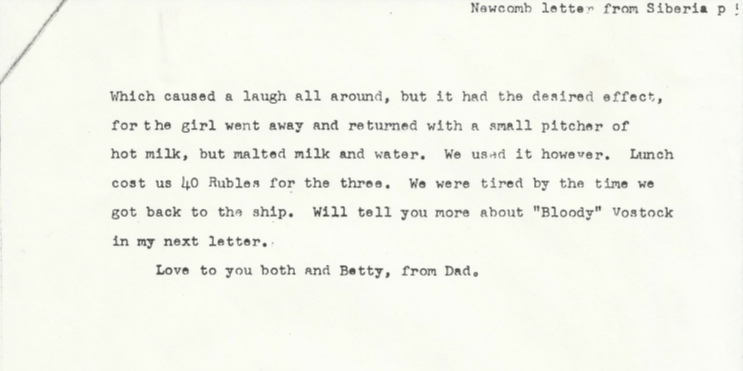
|
|
Chapter Eight |
||
|
While becoming acquainted at the Firemen’s Ball, Maggie and Garret share a brief discussion of the recent discovery of dinosaur fossils in Morrison, just west of Denver. In 1877, while hiking what is now Dinosaur Ridge, local teacher and clergyman Arthur Lakes made a discovery that would rock (no pun intended) the world of paleontology: huge, fossilized bones representing the first dinosaur material ever collected from the famed Morrison Formation. This area of late Jurassic Period sedimentary strata, stretching from Wyoming to Colorado, subsequently became North America’s most plentiful source of dinosaur fossils.
Over the next two years, Lakes and his assistants found fossilized remains of Stegosaurus, Apatosaurus and Allosaurus. His discoveries inadvertently set off what became known as the dinosaur ‘bone wars’. Very soon paleontologists Edward Cope and Othniel Marsh became rivals in an egotistical race to find, excavate and identify new dinosaur species. Marsh employed Lakes and took credit for many of his discoveries. This made Cope even angrier. Excavations continued but the workers sometimes threw dirt and rocks and brandished guns at their competitors. Despite this insanity, the work continued. By the time Cope died in 1897, he had discovered 56 new dinosaur species compared to Marsh’s 80. But even his death did not end the bitter rivalry. Cope’s last request was that his head be donated to science and dissected to prove that his brain was larger than his rivals! |
||
|
Chapters 10 and 22 |
||
|
These two chapters included train travel and I mentioned the whistle signals to help the reader understand how this would have been important to people in those times. One long whistle followed by four short ones meant that all passengers should get on board. Two long whistles signaled the train’s imminent departure. Other signals are as follows; long whistles are designated “—“. Short whistles “*” *** If stopped, backing up. If moving, getting ready to stop. ** Indicates an affirmative response to a hand signal, and proceed. —* This is a warning whistle – used when the engineer’s view is obstructed. * Apply brakes for a brake test, stop. — — Release brakes, start or proceed. |
||
|
Inspiration for Love’s Dance |
||
|
As mentioned in the Author’s Notes at the end of the novel, I drew inspiration in developing my heroine, Maggie, after reading historical accounts of American heiress Huguette Clark. Two biographies have been written about her and I highly recommend both: Phantom of Fifth Avenue by Meryl Gordon; Empty Mansions by Bill Diedman and Paul Clark Newell, Jr. Born in 1906 in Paris, Huguette was the second child of a May-December union between 67 year old copper baron William Clark and his 28 year old second wife Anna La Chapelle. William Clark was one of the richest men in America, making his fortune in copper mining just at the time that Alexander Graham Bell was inventing the telephone. Clark County, Nevada is named in his honor. Huguette’s years as an adolescent and debutante were spent living on upper Fifth Avenue in New York in a mansion of 121 rooms, which also included a bell tower, five art galleries, a swimming pool and a full-time organist. In 2011 when she died at age 104, Huguette Clark was living in New York’s Beth Israel Medical Center where she had spent her last twenty years sequestered in a shaded hospital room. This arrangement was her choice and paid for out-of-pocket. Huguette was not ill and the hospital administrators were originally faced with an ethical question in admitting her. In the end, many generous donations persuaded them to allow her to reside there. In the meantime, she continued to pay the upkeep on several extravagant properties in which she never set foot. Her 22 room Connecticut mansion had not been lived in for fifty years. The Santa Barbara estate, where she employed a chauffeur, housekeeper, maid and gardener, had not been visited since 1953. Once she took up residence at the hospital, she no longer visited her exclusive apartment at 907 Fifth Avenue, yet continued to tip the doorman $10,000 every Christmas. While living at the hospital, the elderly Huguette surrounded herself with trusted aides to whom she frequently wrote checks for houses, apartments, automobiles, etc. To her nurse, Hadassah Peri, she gave a total of $31 million. It has been well documented that Huguette’s father said to her, as a young debutante, “No one will love you for who you are. They will love you for your money.” It is believed that her self-imposed isolation and other eccentricities were partially the result of her father’s warning. During her life, Huguette had several close calls which may have added to her insecurity. She had originally been booked for passage on the fateful crossing of the Titanic, but a change was made at the last moment. Her family had been forced to flee Paris with no cash in their pockets during the German invasion of France in 1914. Overexposed in newspapers, she felt herself an obvious target at the time of the Lindbergh kidnapping. It is hard to imagine any father warning his daughter that no one would love her but for her wealth, but evidently it happened. This event helped set her on a path to loneliness and isolation, a stark reminder that money does not necessarily buy happiness. My wealthy heroine, Maggie, is given similar advice from her father, but decides to do something about it. |
||
|
Amethyst Creek @ Amazon
Amethyst Creek @ Facebook
Amethyst Creek @ goodreads
|
   |
The Next Generation
Author’s Notes |
   |
|
To imagine a sequel to Pride and Prejudice is to trespass into the sacred realm of the Holy Grail of romance novels. If you deign to attempt writing a sequel, proceed with extreme caution and be prepared for an overwhelming avalanche of criticism. |
||||
|
Love and Marriage - Developing My Main Character, Pearl |
||
|
In her wonderful novels, Jane Austen gave her female audience much to think about when it came to love and marriage. She masterfully guided readers through a series of perilous situations in which marriageable young ladies might find themselves in the 1800’s. When Lydia disgraced the family and ran off with Wickham, it can be safely assumed that it was not to discuss the weather. My research found that there was plenty of hanky panky going on during Victorian times as evidenced by the alarming number of out-of-wedlock births. Secret relationships, unhappy marriages, lack of contraception and the inability to obtain divorces all contributed to the number of illegitimate births. Foundling ‘hospitals’ had been established in London as early as the 1740’s as homes for deserted children. By 1837 Charles Dickens published Oliver Twist as a serialized story, calling attention to the plight of the destitute, unmarried mother with a child to care for. Beginning in 1854 in the United States, ‘Orphan Trains’ relocated approximately 200,000 orphaned, abandoned or homeless children to new families in the Midwest and West. With this historical background, it seemed appropriate to include some discussion of orphans and illegitimate births in my novel. In developing my main character, Pearl, I gave a lot of thought as to what type of parenting she would receive at home from her mother Elizabeth and her father, Fitzwilliam Darcy. What type of young lady would she be? How would her brain be wired? It seemed likely that this imaginary young lady would be insightful and honest, like her mother, and also educated and well-read. Like her father, she would carefully observe the social conventions expected by polite society. She would also be able to speak her mind and would have friends and acquaintances at all levels of society. In evaluating potential suitors, I believe such a daughter of the Darcy’s would not dismiss a young man due to unequal financial circumstances. Instead, she would embrace characteristics such as honesty, integrity, competency and kindness in looking for a potential mate. It seemed plausible to me that she might be attracted to young Miles, the local blacksmith, as he was endowed with all these fine qualities. In developing my character further, Pearl’s friendship with an older lady from the village, Mrs. Foster, also seemed reasonable. As friends and neighbors, they might naturally embark on a joint project, to make dolls for the girls in the parish orphanage for Christmas. Pearl would be unselfish and generous and would have empathy for those less fortunate. |
||
|
Hampton Court |
||
|
In chapter eight, Blake and Bess set off for a visit to Hampton Court Palace. Built by Lord Chancellor Thomas Wolsey beginning in 1514, it contained 280 guest rooms maintained by a staff of 500 servants. The property was confiscated by Henry VIII when Wolsey fell out of favor and it became King Henry’s royal residence. Hampton Court was within comfortable reach of London, twelve miles, yet well removed from the capital city where the dreaded plague so often reaped its grim harvest. In the late 1700’s, restoration of the Great Hall and other parts of the castle began and in 1838, during the reign of Queen Victoria, the restoration was completed and the palace opened to the public. Victoria never considered the palace as a possible home and opened the property to the public to celebrate her accession. It was a pleasant carriage ride from London and visitors also arrived by boat. The Hampton Court railway station opened in 1849. One famous feature of the palace grounds is the Maze. A keeper on a high platform watches the progress of those who enter to ensure that no one is completely ‘lost’. In the old days, strangers who ventured in alone to attempt to solve the secret of the Maze could wander for hours and finally had to be rescued, for it is as difficult to find the way out as it is to reach the center. |
||
|
Amethyst Creek @ Amazon
Amethyst Creek @ Facebook
Amethyst Creek @ goodreads
|
| Amethyst Creek: The Next Generation |
  
|
| Proceeding With Caution |
| Love and Marriage - Developing Pearl |
| Hampton Court |
  
|
| Purchase The Next Generation, A Sequel to Pride and Prejudice at amazon.com. |
  
|
   |
Return of the Scoundrel Author’s Notes |
   |
|
Plot Summary – The Return of the Scoundrel It is 1888 and handsome scoundrel Bridger Crandall has escaped from prison. He is eager to plot revenge against the woman who put him there seven years ago, Maggie Blackstone. He assumes a new identity and finds refuge in the lawless, booming silver-mining town of Leadville. Teeming with miscreants and swindlers, newcomers all, it is the perfect place for an escaped convict to blend in and make a new start. A chance meeting with innocent young schoolteacher Libby Talbott facilitates his plans to exact revenge. Convinced that Bridger is a reputable gentleman, Libby unwittingly provides him the information needed to advance his evil scheme. His passionate kisses overwhelm her sensibilities. Soon she is torn between her growing attraction to a man who is merely using her and the amorous attentions of a wealthy businessman from Greeley. Will Libby fall victim to a charming rogue? Will Bridger Crandall be stopped before it is too late? |
||||
|
August 1887 Colorado State Penitentiary, Canon City Bridger Crandall, inmate #526, sat on the ground under the lone cottonwood and dipped the ladle into the bucket as he surveyed the familiar landscape. He drew the water to his lips but it provided little in the way of refreshment. By now it was too warm. He drank it anyway – best to keep himself hydrated today. There had been no relief from the day’s heat, not even the hint of a breeze. The afternoon sun was intense and there were few clouds. He had been laboring in the brickyard since early morning. There were other jobs available in this place which housed society’s rejects, but working outside the walls of the prison was every prisoner’s ambition. As a new inmate back in 1880, Bridger’s first unlikely occupation in the stir was shoe cobbling. The Colorado Boot and Shoe Company employed approximately forty convicts in the manufacture of boots and shoes. The cannery, prison farm and blacksmith shop provided other worthwhile opportunities for the prison population. These were all in keeping with Warden Cameron’s philosophy that inmates who were occupied with steady work could achieve a sense of responsibility, accomplishment and self-worth and therefore would be less likely to cause disciplinary problems. When Warden Cameron had first taken over his duties, he was interviewed by the local newspaper, the Canon City Daily Sentinel, about his ideas. “An honest day’s work with substantial meals will enable the inmate to rest at night and not be planning for the things that the idle mind will be contemplating upon his release,” he had said. The inmates knew very well what the Warden thought and Bridger wisely played along. Whenever in the presence of the Warden, Bridger was a fawning, lickspittle apple-polisher. Over time, the Warden came to regard him as someone who was more unfortunate than bad. However, throughout his years of incarceration, Bridger Crandall had been mentally focused on only one thing – finding a way to escape. With that in mind, he took another sip of the stale water. For seven years he had been a model prisoner; he worked hard, stayed out of trouble and kept his head down and his mouth shut. He cursed himself for having regularly attended the weekly Bible study to gain additional favor with the Warden. That was a colossal waste of time. Was he seeking a path to righteousness or trying to achieve sainthood? Nevertheless, here he was, laboring in the brickyard; the privilege he had earned for good behavior and to Bridger, it also presented a ripe opportunity. Each morning the men were marched down First Street, across Main and onto the Catlin Brick Yard about a mile from the iron gates of the prison. It was a large operation. Approximately three million bricks would be made by inmate labor over this summer alone. One of the guards, Jonas Perry, stood nearby. His hands were folded over the rifle he carried in front of him. He was chewing a wad of tobacco and looked bored, probably fatigued from having to stand around in the heat all day, Bridger thought. Keeping a low profile when surrounded by wastrels, troublemakers and hardened criminals was not easy. He steered clear of convicted cannibal Alferd Packer who lived in his cell block. Another one to avoid was George Witherell, in for murder of a sheepherder. A tall, noisy man with big fists, he’d gotten off with life imprisonment and was always looking for a fight. Complicating matters, there were also a few female inmates. Although they were housed in a separate cell block, there were ample opportunities for mingling with their male counterparts in the prison yard. This led to love triangles, tension and confrontations among the men. It could be argued that Bridger’s offenses paled when compared to some other criminals. He had been convicted of two counts of attempted murder and one count of attempted larceny, having served seven years on a twenty-five year sentence. Bridger was only 35, but the best years of his life would be all used up by the time he served out his sentence. He frequently thought about his offenses and what had landed him in prison. And he recalled bitterly that bitch Maggie Lenihan, no, make that Maggie Blackstone now. She had unmasked his fraudulent gold mining scheme and blabbed about it, ruining his plans. Bridger had little remorse for his crimes but regretted that he hadn’t put her in the ground when given the chance. The last he’d heard, she and that cowboy husband of hers had put down roots on ranchland in Weld County, somewhere near Greeley. Someday he would settle up accounts. He could not think about that now. The way he had it figured, working in the brick yard offered him the most promising opportunity to gain freedom. Within the walls of the Colorado State Penitentiary, escape would be impossible without help. There were two cell buildings on the prison grounds – one 170’ x 44’ and 28 feet high, containing 42 double cells and 120 single cells. The other building was 70’ x 44’ and 28 feet high and contained 48 double cells. A bath and washroom were housed in another long narrow building. The boiler house, built of brick, contained two large boilers for supplying steam for heating and cooking and the washrooms with hot water. All of these buildings were enclosed by a stone wall, twenty feet high and four feet thick. Life in prison was regimented and Bridger imagined it to be very much like the military. Everyone wore a uniform and followed orders. They all knew what they were expected to do. There was discipline. There was a chain of command. There were regular inspections. Prisoners were often marched in formation. Things had a place, all had a function and everyone followed a predictable schedule. A contingent of 61 guards covered three shifts to supervise a prison population of 380 inmates. Bridger had learned from experience that among the guards were several bad apples who found it very useful to have a penal system dependent on bribery and corruption. With so many rules, there were lots of ways for inmates to get into trouble but identifying a violation was often subjective. Of course, disobeying an order, stealing, fighting, idleness, having no interest in his work, wasting food, giving backtalk, or being found with a knife were offenses that would result in an inmate being subject to discipline. Losing privileges for a week was light punishment. Then there was The Old Grey Mare – a wooden structure to which the inmate was bent over and strapped down to be flogged with a belt that had been soaked in salt water. Inmates in need of further remediation spent time visiting Little Siberia – a 5’ x 7’ cell encased in stone with a solid steel door. The only reading material was the Bible. There were two meals per day consisting of cold left-overs. As far as he knew, the Daily Sentinel did not print stories about what went on behind the prison walls. Stories like that never saw the light of day. Sometimes the newspaper was the graveyard where the truth went to die. In the nearby rail yard a freight train was being made up. Bridger could hear the loud bangs and squeaks from the coupling of the cars a few blocks away. Once each day, the Denver and Rio Grande freight train passed through Canon City to pick up more freight. It then continued on to Salida and Buena Vista, finally arriving in that hotbed of silver mining, Leadville. Bridger knew this was true because the Royal Gorge War, as it had been called, had been settled for some years. General Palmer and his Rio Grande Railroad owned the track through the narrow gorge and in a cash settlement to the Santa Fe, had the rights to the route. It was each day at around four o’clock, when the inmates were being marched back to the prison, that the steam engine could be heard letting out two long whistles, indicating its imminent departure. It was a familiar sound, one that called to him every afternoon as he passed through the prison walls. The big iron gates were slammed shut, the squeak and clang of metal reverberating in the air. If he could get to that freight train, he might have a decent chance. A mining camp was a place to blend in. It had been his experience that there were very few men in any mining camp who hadn’t run away from something he couldn’t swallow back where he came from. Everyone had a past and folks didn’t ask questions. Bridger was tall and able-bodied. He spoke intelligently and could be charming when he wanted to be. With the proper attire, he could easily pass for a gentleman. Bridger had no doubt that he could find work in Leadville and most importantly, he could achieve anonymity. The train was his ticket to a new beginning. “Get back to work, Crandall,” he heard Perry shout. “Those bricks ain’t gonna load themselves,” he said crossly as he spat tobacco juice on the ground. Bridger took one last fortifying sip and then rejoined the others. After years of working in the brickyard, of patiently watching and waiting and calculating, Bridger thought this day might be his best opportunity yet to check out of the U.S. Hotel, as the guards called it. He had worked for his board long enough. For one thing, the Warden had been called upon yesterday to provide inmate labor to fight a forest fire several miles west in an area known as Texas Creek. The normal ratio of inmates to guards on a work detail was seven to one, but this emergency had resulted in one less guard to supervise inmates in the brickyard. Today, two guards were supervising nineteen men. Once the fire was out, the guard detail would return to normal. Also in his favor was the weather. It was late summer, still hot and sunny. It would be foolish to attempt an escape in late fall or winter. A man might easily freeze to death. A successful escape involved more than just walking away or giving the guards the slip, and Bridger knew he would not have a second chance. Making a run for it was risky. Who could outrun a bullet? He needed some kind of diversion, something to distract the guards. But what? There were other obstacles. It was daytime. The striped prison uniform unmistakably advertised his identity. The residents of Canon City weren’t fools. With a prison on the edge of their town they were always on high alert. They were well-armed and always itching for a necktie party. He would immediately need different clothes. His unusual haircut was another dead giveaway. One month the prison barber would cut the hair on one side of the head; the next month, the other side would be cut. Lopsided haircuts belonged to prison inmates. He would also need a hat. Most importantly he would need a new identity, a new name. Bridger returned to loading the bricks onto the dray. He worked alongside Charlie Reynolds, in for robbery and Dan Dean, convicted of kidnapping. It was Reynolds’ unlikely misfortune which provided Bridger the perfect opportunity to make good on his escape plan. The diversion he desperately sought unfolded before him. For when Reynolds reached to retrieve more bricks from the pile, he was not expecting to upset several angry hornets. He tried to swat the foul things away, but instead received a nasty sting just above his left eye. He howled in agony from the burning pain and hollered a few expletives while inmates Jim Hildenburg and Red Reiley jumped back to give the hornets a wide berth. With his hand pressed against the injury, Reynolds quickly made for the bucket, and furiously doused his face, hoping the water would provide some soothing relief. In the meantime, Hildenburg and Reiley turned on their heels and ran a few more paces. In the chaos, Harry Tinsley, the other guard, thinking they were trying to make a run for it, ordered ‘Halt!’ before he fired. Reiley was shot in the leg and fell to the ground, seconds before another inmate charged at Tinsley from behind and knocked him unconscious, grabbing his rifle. It was then that some of the inmates saw their opportunity and scattered in all directions. Perry, now being the lone guard, was forced to take a defensive position and fired a warning shot, but for those who had escape on their minds, it was too late. Most of the men wisely fell to the ground in surrender. They did not want to get caught in the crossfire nor did some inmates, who were serving light sentences, want to have time added to their imprisonment. Nevertheless, four of the desperados, including Bridger, took off at lightning speed, scattering in different directions and one of them had a rifle. |
||||
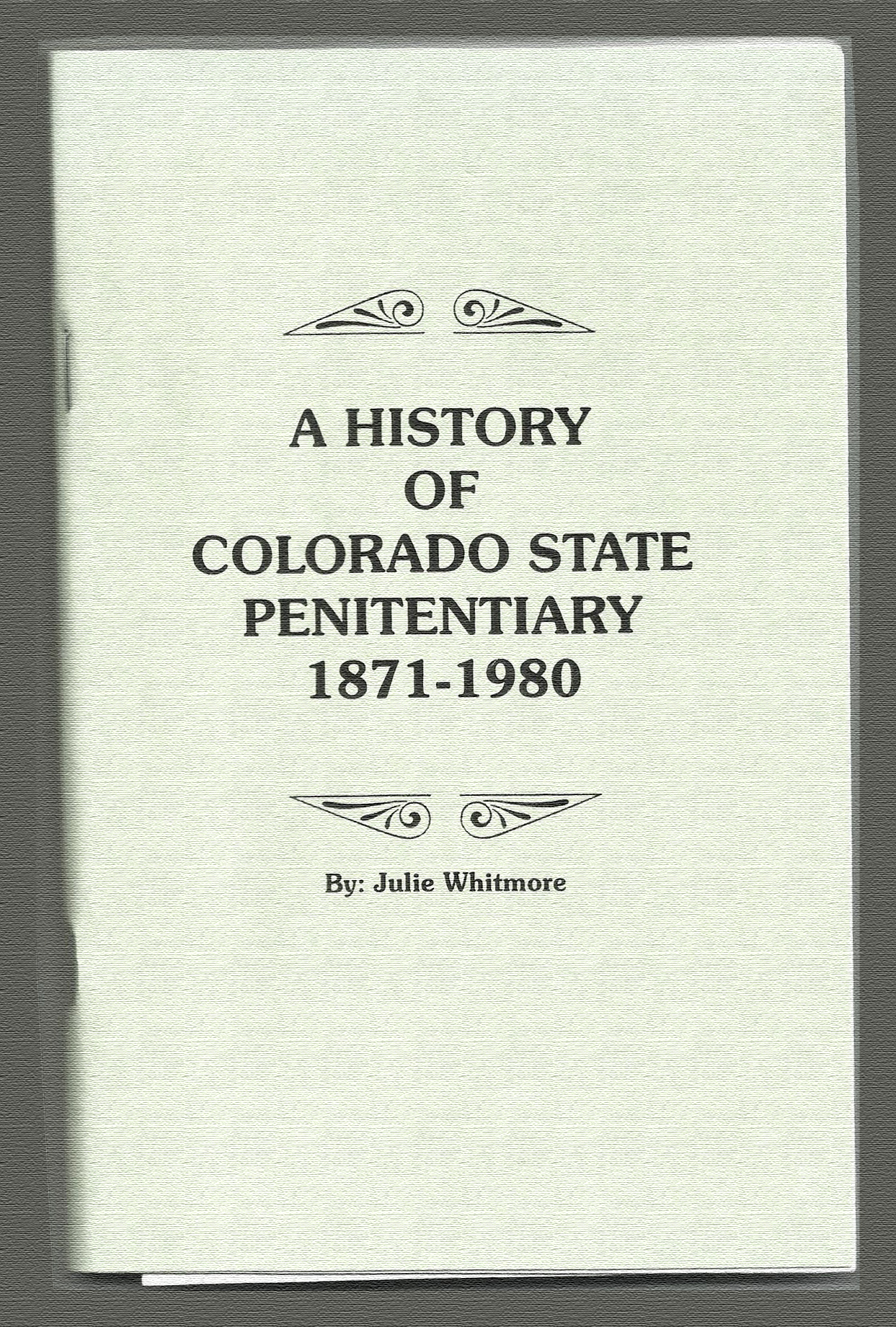
|
||||
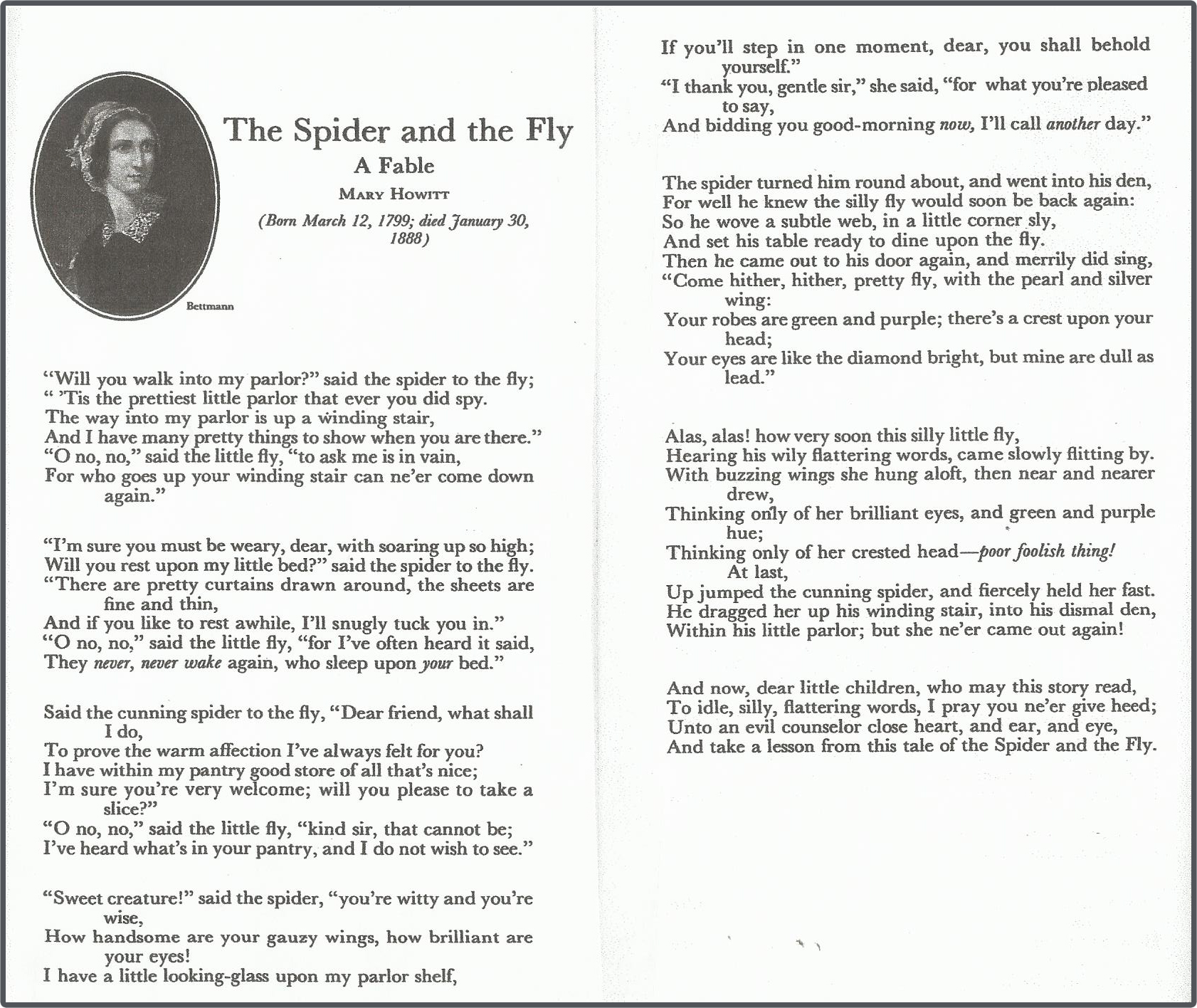
|
||||

|
||||
|
The below folding bath is mentioned in Chapter 10: 
|
||||
|
Amethyst Creek @ Amazon
Amethyst Creek @ Facebook
Amethyst Creek @ goodreads
|
   |
Gold and Glitter, Celebrating Our Fifty Years of Marriage
Author’s Notes |
   |
|
Introduction |
||||
|
Marriage is an adventure. It is often a beautiful, lasting journey filled with excitement, humor and romance, along with some mayhem, friction and unexpected events. In this narrative, I will share with you a series of incidents and colorful individuals that made a lasting impression through fifty years of marriage. |
||||
|
"Can You See the Pavement?" |
||
|
It was New Year’s Eve 1999, tomorrow would mark the year 2000. What an event! Computer experts had warned that things could go wrong when the calendar rolled over from 1999 to the year 2000. I remember worrying about the ice cream in the freezer. I wrapped it in a plastic bag in case the freezer failed us at the stroke of midnight! Ringing in the year 2000 called for a special celebration. In truth, it was hard to know how many more opportunities we would have to vacation together as a family. The kids were leaving the nest. Phil had been out of college for nearly two years and was living in Chicago. Andrew was halfway through his sophomore year of college. But we were very blessed and somehow we all made it to Disneyland, the happiest place on earth, for the New Year’s Eve/Day festivities. When the calendar turned over to the year 2000 we would all forever remember where we were in that moment. Anticipating that the park would be ridiculously crowded on New Year’s Eve, we rose early and were at the gate when it opened, making for an extremely long day. Our previous experience had been to have our hands stamped, leave the park and rest for a while at the hotel, to return later. But on this historic and particularly busy day, we wondered if leaving the park would endanger our chances of being readmitted later. At what point did the management of Disneyland declare the park 'full', close ticket sales and turn people away? It was mid-afternoon, the crowd had been building all day despite a cool, misty rain. I spied a young lady in an official-looking blue uniform. She possessed a managerial air, wearing a nametag. She had a headset with microphone and she carried a clipboard. This is someone with answers, I thought. After all, problems are always solved when you ask the right person. "Excuse me miss," I said politely. "Can you tell me, on a busy day such as this, at what point do you consider the park to be 'full'?" She looked at me with some disdain and offered a comment of her own. With all the charm of a gunnery sergeant she said rather sarcastically, "Can you see the pavement?" I looked down at our feet. "Why, yes," I said innocently. Her quick retort came at me like a shot aimed right into the cavalry charge. "Park’s not full," she said, and with that she was gone. The whole thing left us a little bit stunned. We never saw that answer coming. Perhaps this young lady was sour. Had she been turned down for the role of one of the princesses who roamed the park signing autographs for adoring little girls? Regardless, we were here to ring out the old and ring in the new – not only a new year, a new millennium. Never leaving the park, we stayed until midnight for the fireworks display. By then a fine, chilly drizzle had settled over the revelers. The crowd dispersed, everyone drifted off and we walked back to our motel. I was thinking along the way, it’s true what some say about California – it’s cold and it’s damp. "Can you see the pavement?" has become our epiphanic version of the real question which of course must be: "Are you stupid?" Or perhaps, "Is the Pope Catholic?" Or, put another way, "Must I state the obvious?" If, for example, we are packing our bags for a trip and I ask my husband if he has remembered his favorite hat, the reply might be ‘Can you see the pavement?’ I know I have my answer. |
||
|
Amethyst Creek @ Amazon
Amethyst Creek @ Facebook
Amethyst Creek @ goodreads
|
| Gold and Glitter, Celebrating Our Fifty Years of Marriage |
  
|
| Introduction |
| Can You See the Pavement? |
  
|
| Purchase Gold and Glitter, Celebrating Our Fifty Years of Marriage at amazon.com. |
  
|


